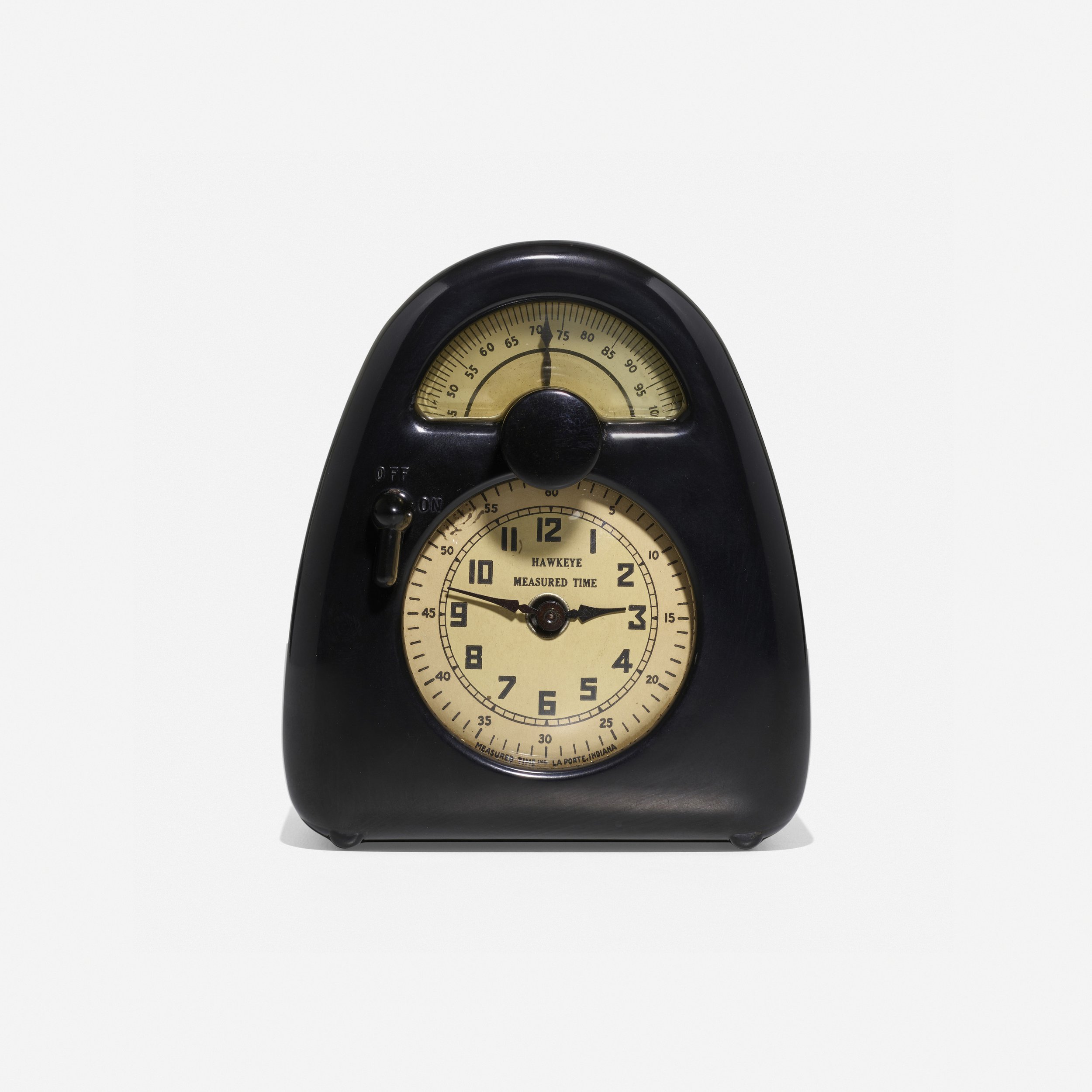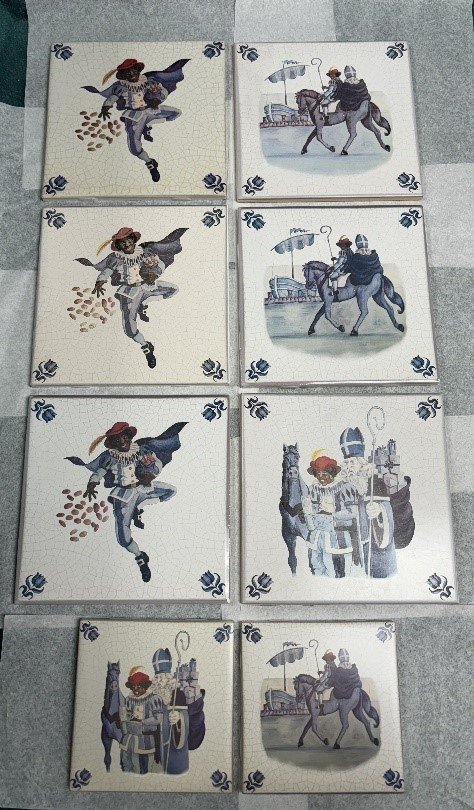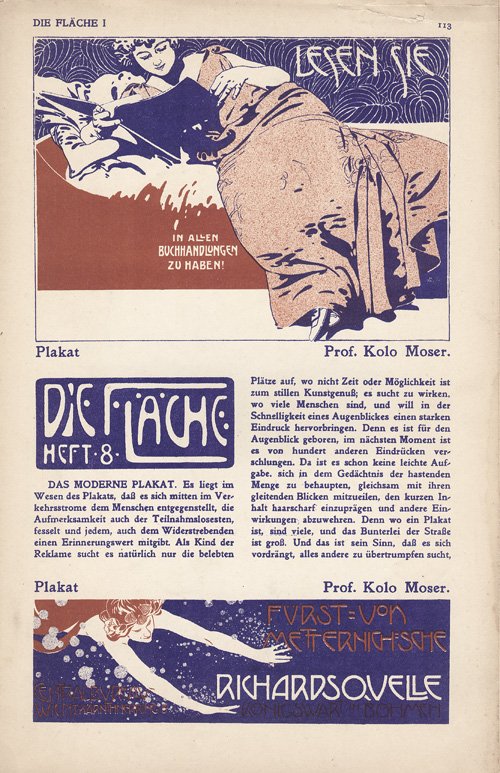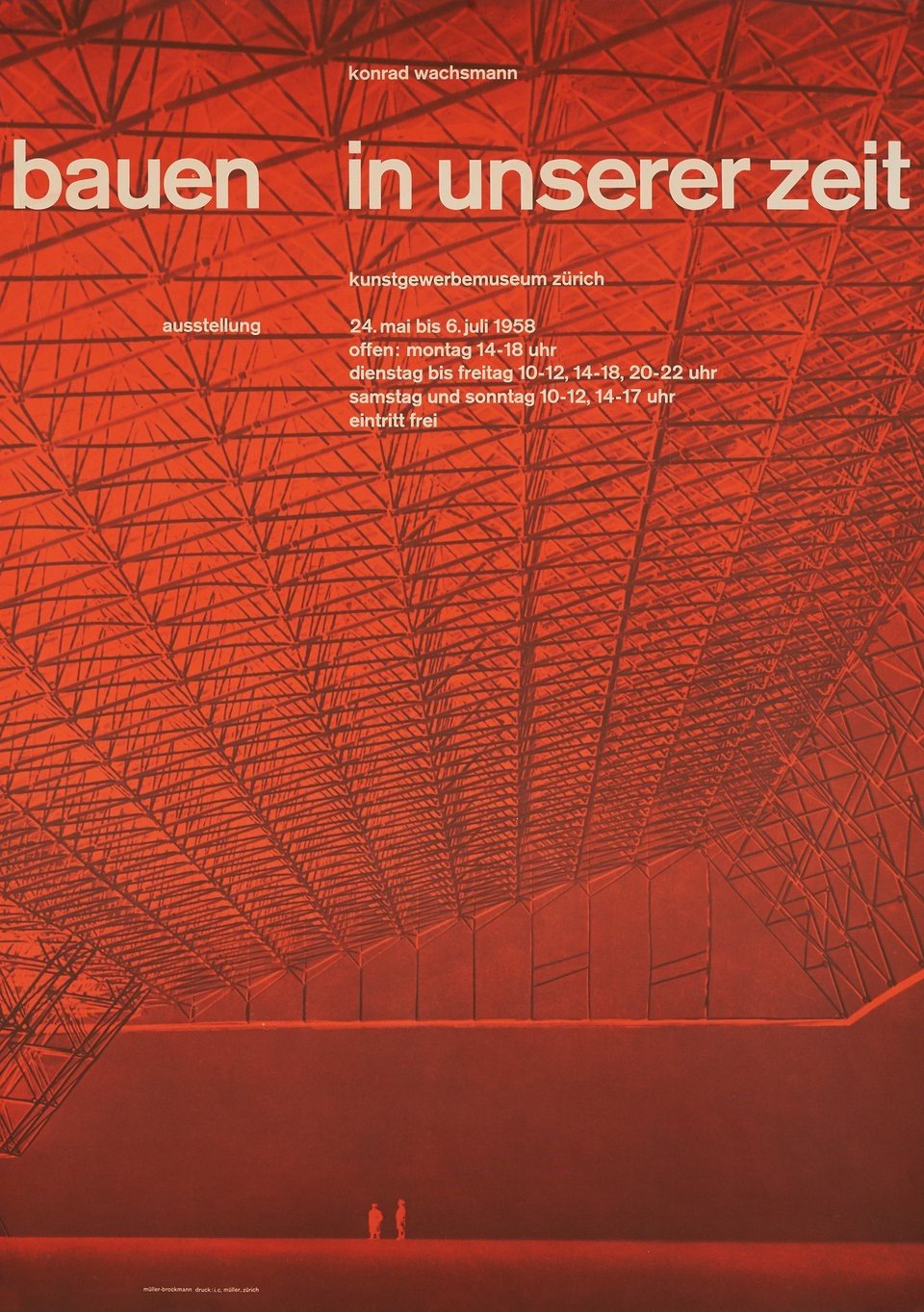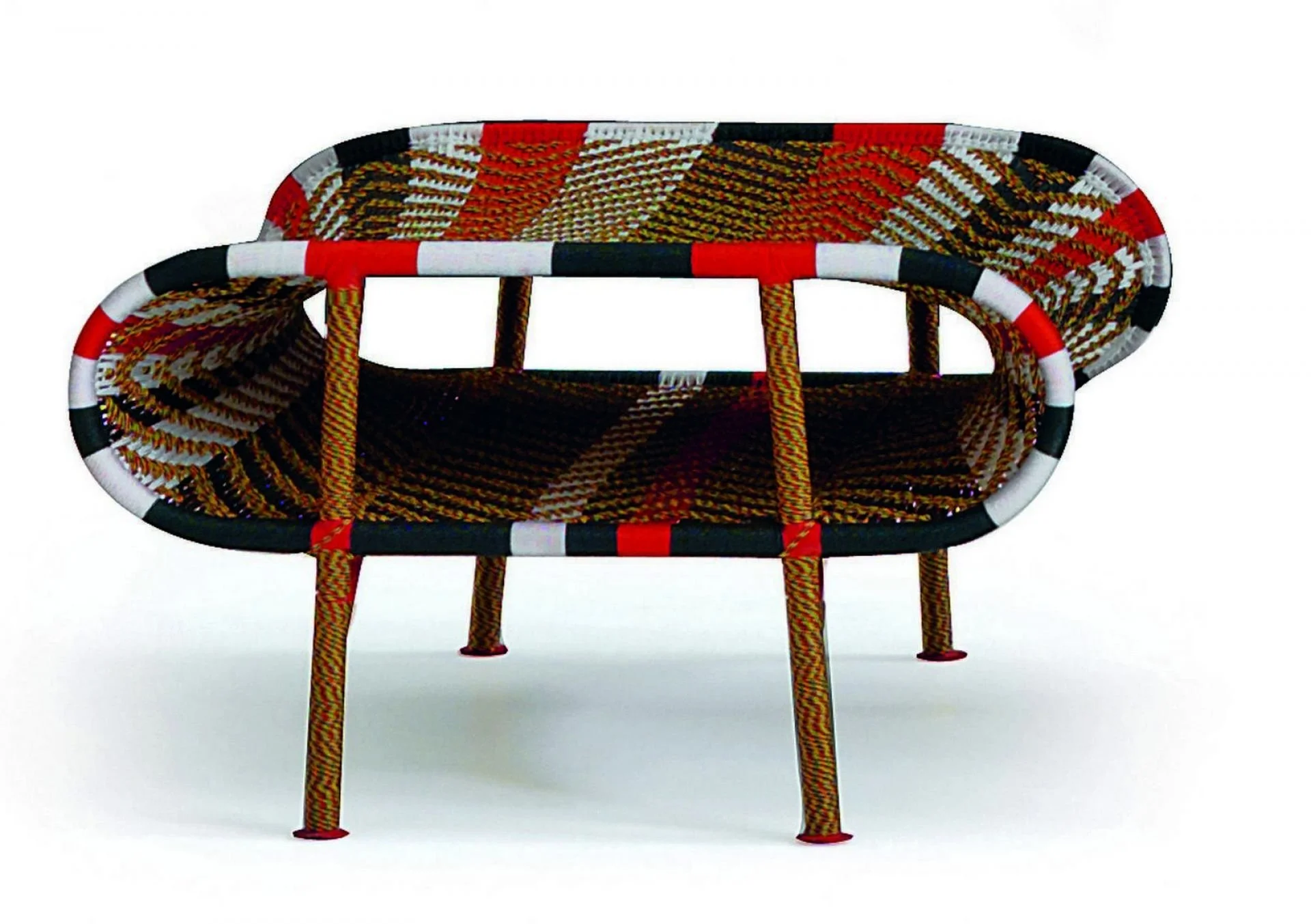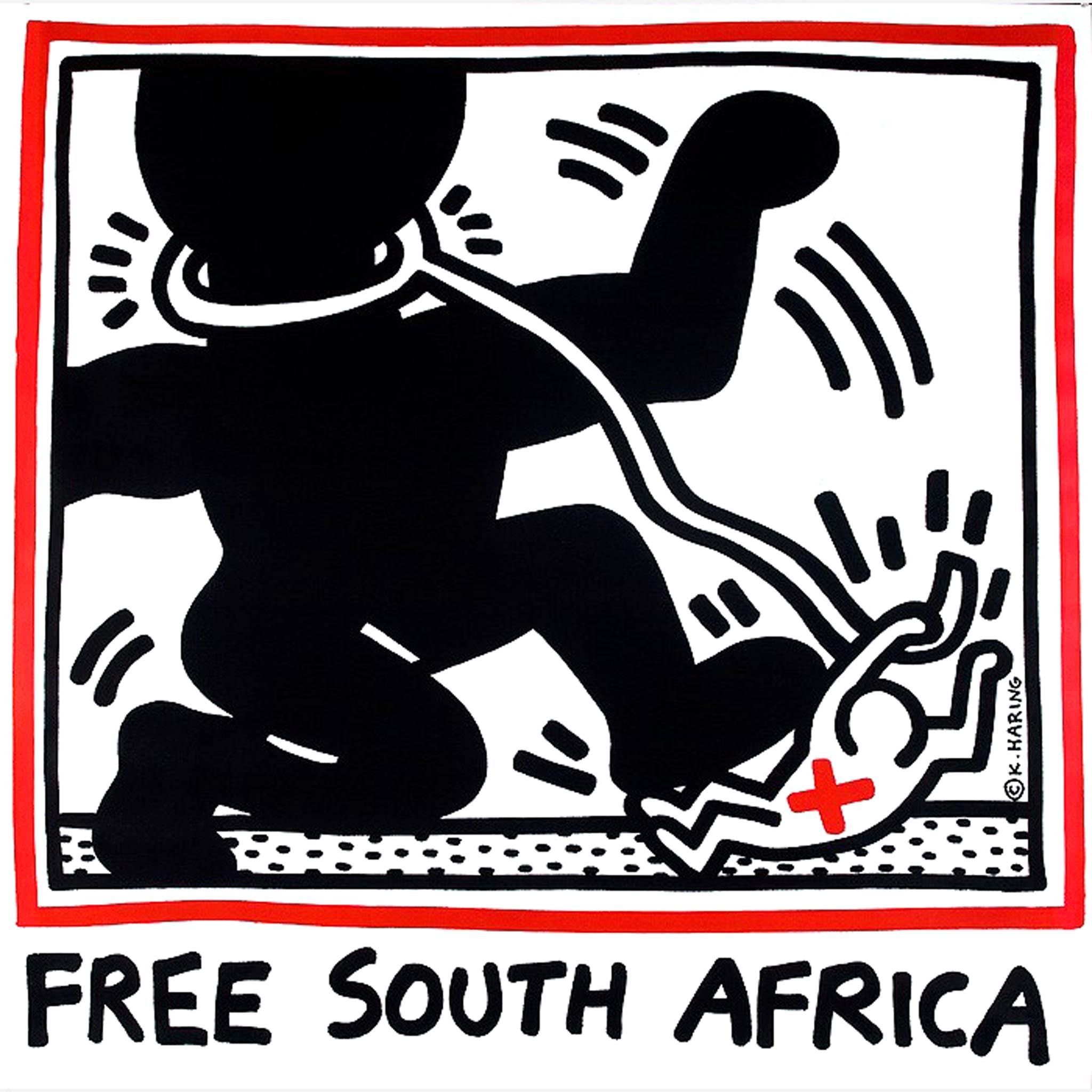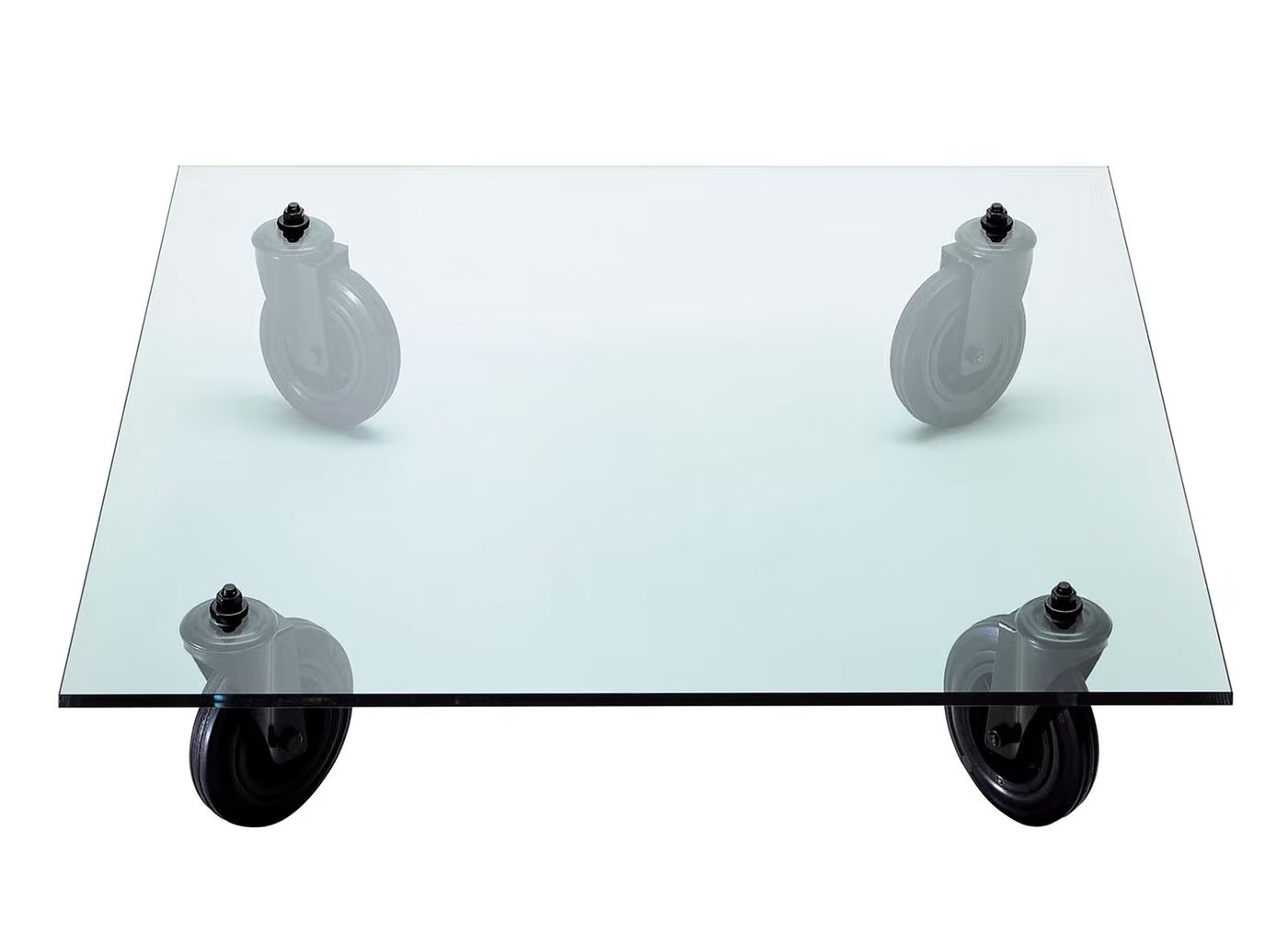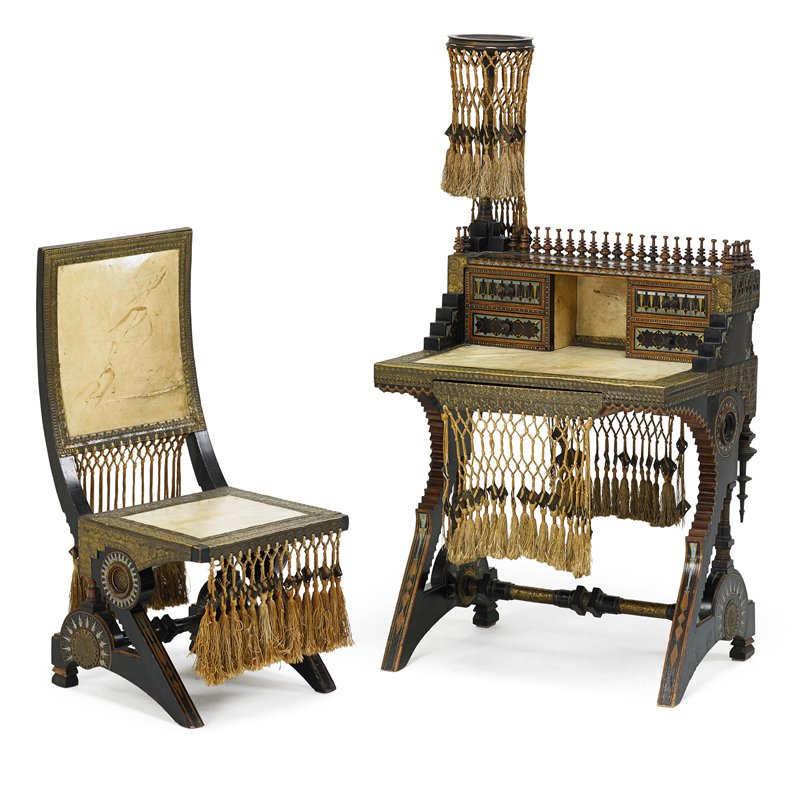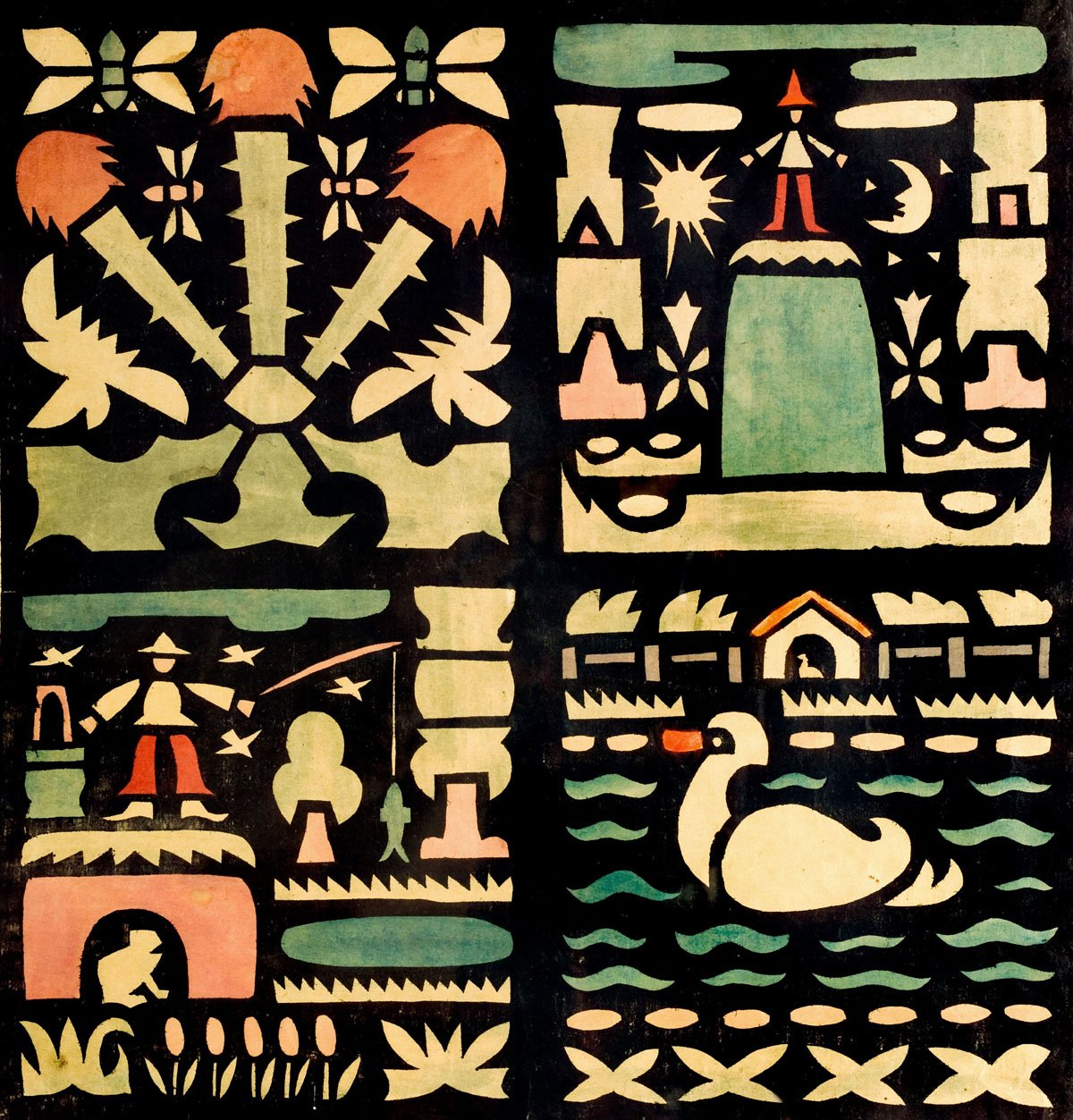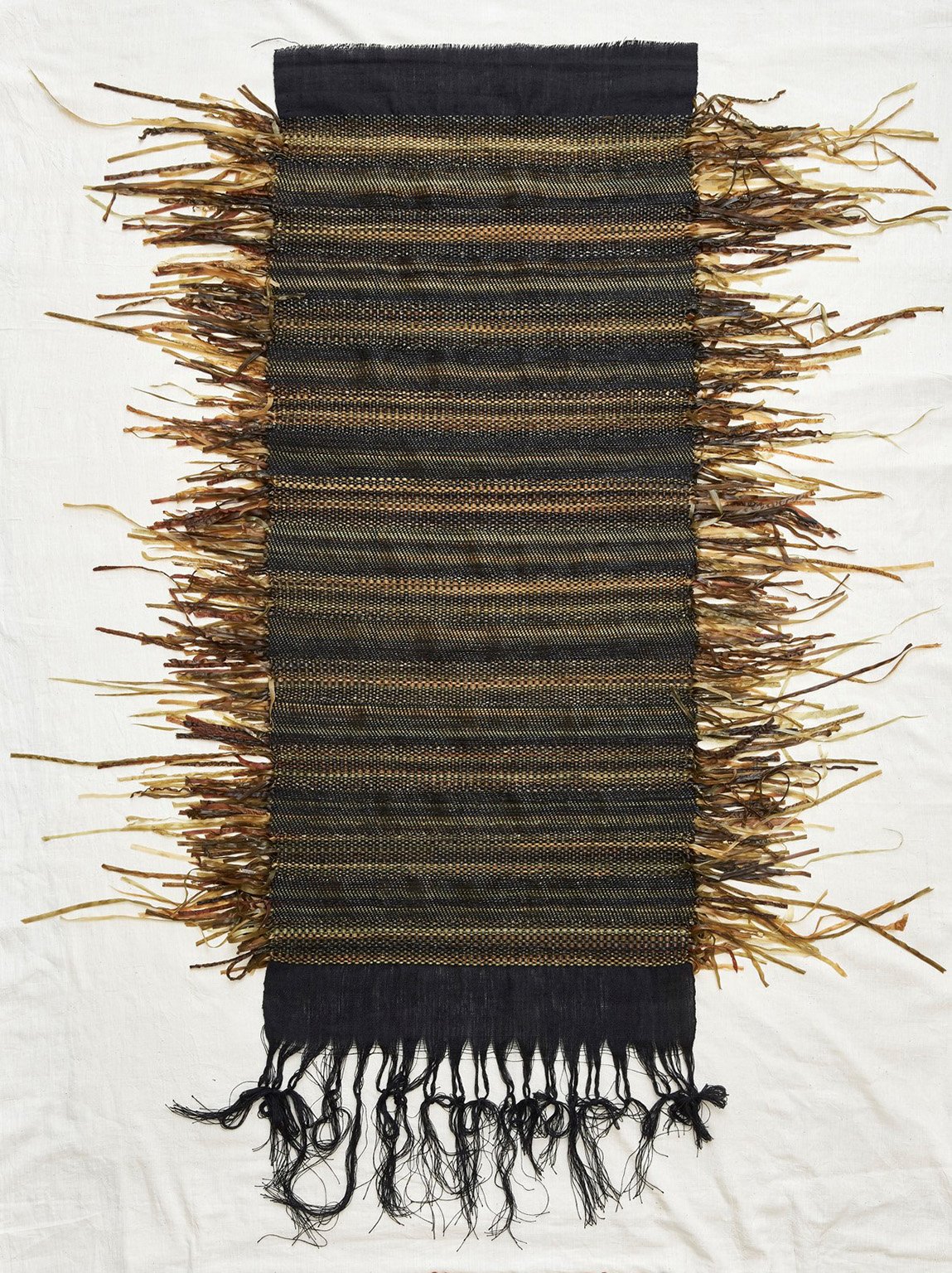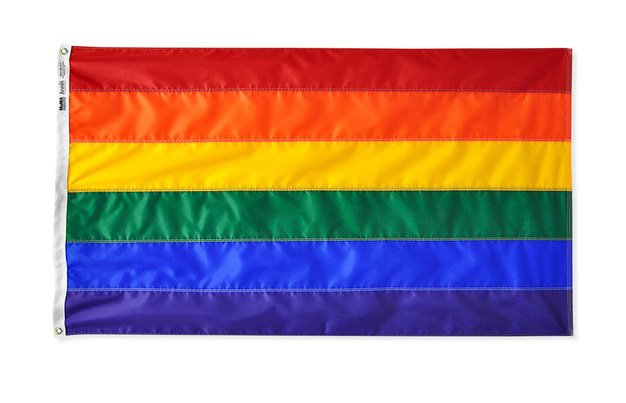Recent Acquisitions 2022-2023
Explore recent acquisitions to the PMA’s design collection.
Measured Time
“Measured Time” Clock and Kitchen Timer. Designed by Isamu Noguchi (American 1904-1988).
Made by Stevenson Manufacturing Co c. 1932. Bakelite, glass, printed paper, enameled brass, 6 1/8 × 5 1/4 × 3 3/8 inches.
Among Noguchi’s first industrial design were Measured Time (c. 1932) and The Radio Nurse (1937). While the Radio Nurse—already represented in the Philadelphia Museum of Art collection—has become one of Noguchi’s best-known designs, this clock-timer shows that the designer’s sculptural approach to the plastic qualities of the material Bakelite began earlier.
Offered gift of Ralph Citino and Lawrence Taylor.
Tuxedo Service
Pieces from the “Tuxedo” Service. Designed by Charles Gwathmey (1938-2009).
Made by Swid Powell, c. 1984. Porcelain with transfer decoration.
Among those profiled in the seminal Five Architects (1972), Charles Gwathmey undertook this tableware design for Swid Powell, a major commissioner of architect-designed housewares through the 1980s. Taking its name from the demure black-and-white design, the porcelain service sold so successfully that the line was expanded to include a broader range of forms. This gift comprises a place setting with charger, dinner plate, salad plate, soup bowl, cup and saucer.
Dancing Tables
“Dancing” Tables (2). Designed by Bob Trotman (b. 1947). Made by Arc International, Inc. (1985, 1986). Maple, mahogany, lacquer.
25 11/16 × 12 11/16 × 12 11/16 inches (65.2 × 32.2 × 32.2 cm.
Sculptor and furnituremaker Bob Trotman practices across the spectrum of bespoke commissions and serial production. The Dancing Tables were his most successful example of the latter. While the name would seem to derive from the form of its legs, or the joyful movement carried through the confetti-like patterns, for Trotman it was also a subtle, ironic allusion to Marx’s Das Kapital meditations on the transformation of natural materials into commodities that “begin dancing of [their] own free will.”
Puzzle Chair
Puzzle Chair. Designed by David Kawecki, 1991. Made by 3D Interiors, San Francisco. Birch, plywood.
33 1/8 × 29 7/8 × 24 inches (84.1 × 75.9 × 61 cm). Height of seat: 18 1/8 inches (46 cm).
San Francisco–based designer David Kawecki was a major presence in the 1990s. The laser-cut, flat-packed plywood pieces translated pragmatic considerations — low-waste fabrication, efficient transportation, and DIY assembly — into aesthetic features. Kawecki’s furniture was heralded as a comeback for plywood (an iconic material in the early 20th century), and prompted its inclusion in Mel Byars’s 50 Chairs: Innovations in Design and Materials (1997). This is a rare early edition with color-dyed plywood in red, yellow, and blue; later versions had a uniform blonde stain.
Stowaway Keyboard
“Stowaway” Portable Keyboard. Designed by Pentagram, 1999. Injection-molded ABS and stamped and formed aluminum. Folded: 1 × 3 5/8 × 5 1/8 inches (2.5 × 9.2 × 13 cm). Unfolded: 13 7/8 × 5 1/8 inches (35.2 × 13 cm).
Folding to the size of a wallet, this keyboard with a flexible circuit board was designed to provide a full-sized typing surface for the new class of personal digital assistants in the late 1990s and early 2000s. Designed by Bob Olodort (1946–2019), the Stowaway was the first commercially successful portable keyboard. While similar products became obsolete along with the devices they were made to support, the Stowaway garnered industry awards and staying power over generations of PDA development, lasting even into the early smartphone era.
Mayday Lamp
“Mayday” Lamp. Designed by Konstantin Grcic, 2000. Made by Flos. Injection-molded polypropylene.
20 7/8 × 8 7/16 inches (53 × 21.4 cm).
In a clever remixing of the bare-bones utility lights used in workshops and construction sites around the globe, Grcic intended the Mayday Lamp as a tool rather than a statement of style. Its light weight and handle design allows it to move easily, stand or hang wherever light is needed, and tidily store its own cord. Grcic’s spartan design language has bolstered his significant reputation and his work has accrued numerous design awards, with a portfolio spanning global manufacturers such as Herman Miller, Vitra, Cassina, Artek, Flos, and others.
Offered gift of Ofelia Garcia
Pop-Up Toaster
Pop-Up Toaster. Designed by Naoto Fukasawa, 2014. Made by MUJI. Plastic, chromium-plated steel, rubber.
7 11/16 × 9 5/8 × 6 1/8 inches (19.5 × 24.5 × 15.5 cm).
Fukasawa’s work prioritizes ease of use, aesthetic simplicity, and close attention to the ways mundane objects engage our everyday habits. Best-known as design director of MUJI—the Japanese “anti-brand” consumer goods company—Fukasawa advocates for a longevity, accessibility and subtle humor over ephemerality and blatant commercialism. The carefully radiused curves and quiet friendliness of this popular toaster typifies the designer’s attention to proportion and fine detailing.
Naoto Fukasawa’s work and its impact will be the subject of the 2024 Collab Design Excellence Award exhibition at the Philadelphia Museum of Art. Join us in November 2024!
Offered gift of R. Craig Miller
Zwarte Piet Tiles
“Zwarte Piet” Prototype Tiles. Designed by Sheila Bridges, 2016. Ceramic.
6 × 6 inches (15.2 × 15.2 cm) (6 tiles); 4 1/4 × 4 1/4 inches (10.8 × 10.8 cm) (2 tiles)
Bridges’ design reinterprets the racist Dutch holiday story of Sinterklaas (Saint Nicholas) and his servant Zwarte Piet (Black Pete) in twelve narrative scenes framed by blue-and-white Delft tiles. Bridges centers Zwarte Piet as the protagonist, reversing the power dynamic between him and Sinterklaas. These eight prototype ceramic tiles complement the Philadelphia Museum of Art’s recently acquired wallpaper with the same design.
Offered gift of Sheila Bridges
Puzzle Coffee Table
Puzzle Coffee Table. Designed by David Kawecki, 1991. Made by 3D Interiors, San Francisco. Birch, plywood. Approx.: 16 1/2 × 33 × 25 inches . (41.9 × 83.8 × 63.5 cm).
Like the Puzzle Chair above, this table was part of an interest in DIY design and the revival of plywood as a design material in the 1990s. Kawecki created his Puzzle line as laser-cut works that could be shipped disassembled and constructed by their users with no hardware—foreshadowing a trend of flat-pack design in subsequent decades. The table’s slot-and-tab construction and perforated panels highlight the fabrication methods at work, and the larger possibilities they represented for decreased waste in the production and transportation of furnishings.
Promised gift of Ofelia Garcia
Die Fläche Magazine
"Die Fläche" - Volume 1, Issue 8. Kolomon Moser (1868-1918) and Adolph Bohm (1884-1951). Designed 1903-1904. Color Lithograph. 12 3/16 × 7 7/8 inches (31 × 20 cm).
Published in Vienna between 1902 and 1911, Die Fläche (The Surface) significantly contributed to the flowering of the decorative arts and design at the height of the Vienna Secession. The magazine showcased everything from posters, wallpapers and playing cards to textiles and packaging in dynamic layouts, strikingly original patterns and letterforms, and playful experiments with stencils and woodcuts. It will be displayed in Gallery 262 next to decorative arts objects made by Vienna Secession and Wiener Werkstätte artists.
Offered for purchase by Galerie bel Étage.
Die Gute Form Poster
“Die Gute Form” Poster. Designed by Armin Hofmann, 1954. Offset lithograph. 50 × 35 inches (127 × 88.9 cm).
Armin Hofmann (1920-2020) was the most prolific champion of modernist graphic design that came to be known as the International Typographic Style—or the Swiss School, for its origins in Basel and Zurich. In his tenure at Yale from 1970 to 1987, Hofmann was a major advocate of modernist typography and helped shape an influential generation of American graphic designers. This poster advertises an exhibition that traveled throughout Europe from 1949 to the late 1950s. Both the exhibition and poster illustrate the intense preoccupation with continuing the aesthetic legacy of the Bauhaus.
Purchased with the European Decorative Arts Revolving Fund.
Atoms for Peace Poster
“General Dynamics - Atoms for Peace” Poster. Designed by Erik Nitsche, 1955. Lithograph. 50 1/4 × 35 3/4 inches (127.6 × 90.8 cm).
The defense corporation General Dynamics debuted this poster at the 1955 International Conference on the Peaceful Uses of Atomic Energy in Geneva. Intended to ameliorate anxiety about atomic research, the poster features a pyramid of flaglike forms supporting the atomic symbol, suggesting constructive rather than destructive force. Emigrating to the US from Switzerland in 1934, Nitsche (1908-1998) was art director at General Dynamics from 1955 to 1960. He embraced color, metaphor and optimism in design—maintaining the modernist principles of abstraction and clarity while eschewing the reductive typography of the Swiss School.
Purchased with the European Decorative Arts Revolving Fund.
Architecture in Our Time Poster
“Konrad Wachsmann, bauen in unserer zeit” Poster. Designed by Josef Müller-Brockmann, 1958. Offset lithograph. 39 × 27 inches (99.1 × 68.6 cm).
Like Armin Hofmann, Josef Müller-Brockmann (1914-1996) was one of the major figures of the Swiss School, which distributed modernist design on a global scale. This poster advertises Architecture in Our Time, a 1958 exhibition of the work of Konrad Wachmann, a Jewish-Austrian architect who advocated the industrialization of architecture—particularly through truss structures like the background of this poster. Wachmann’s spatial grid rhymes neatly with Müller-Brockman’s own modernist proclivities, expressed through precise typographic grids, sans serif typefaces, and saturated color.
Purchased with the European Decorative Arts Revolving Fund.
Sunny Chair and Stool
“Sunny” Chair from “M’Afrique” Collection. Designed by Tord Boontje, 2009. Made in Senegal for Moroso S.p.A., Cavalicco, Italy, in 2023. Painted steel, handwoven polyethylene threads, PVC glides. Chair: 42 1/2 × 24 × 36 5/8 inches, 39.7 lb. (108 × 61 × 93 cm, 18 kg), Height of seat: 18 1/8 inches (46 cm).
“Sunny” Stool from “M’Afrique” Collection. Stool: 16 1/8 × 26 3/4 × 26 3/4 inches, 11 lb. (41 × 68 × 68 cm, 5 kg).
This chair and stool come from Dutch designer Tord Boontje’s “Shadowy” collection, made by Senegalese artisans and inspired by beach furniture found at the North Sea during the 1920s. Each piece features vibrant patterns of plastic, fishing net threads hand-woven around steel frames. Boontje, Patricia Urquiola, Bibi Seck and Ayse Birsel, David Adjaye, Stephen Burks and Ron Arad, among others, were invited by Moroso to create furniture in collaboration with local African artisans for the 2009 “M’Afrique” project that celebrated the African continent.
Purchased with the Neil Sandvold Collab Acquisition Fund.
Modou Chaise Lounge
“Modou” Chaise Lounge from “M’Afrique” Collection. Designed by Ron Arad. Made in Senegal for Moroso S.p.A., Cavalicco, Italy, 2019. Painted steel, colored polyethylene handwoven threads, PVC glides. 146 cm (L) x 70 cm (W) x 117 cm (H); Seat height: 50 cm.
This dynamic, curvilinear chair is the work of British-Israeli architect and industrial designer Rod Arad and the Senegalese metals artist Modou who created the collection for Moroso’s 2009 “M’Afrique” project. Arad is known for furniture that features sinuous forms created out of industrial materials, particularly metal. The cross-cultural collaboration merges design and craft, with plastic fishing net threads woven by Senegalese craftspeople to create the chair’s seat and backrest.
Stephen Burks, the 2023 Collab Design Excellence honoree, curated the debut exhibition of the “M’Afrique” collection, which was presented during Milan Design Week in 2009.
Purchased with the Neil Sandvold Collab Acquisition Fund.
Platinum City Drawings
Five works from the Platinum City series: (left to right) Planometric Drone View at 2 Miles; Isometric Drone View to the Platinum Refinery at 0.5 Miles; The Vacuum Train Vignette Street View; Isometric Perspective Drone View at 1 Mile; and Train Station Vignette Street View. Designed by Sean Thomas Allen, 2014 (printed 2019 and 2020). Inkjet prints. Each: 46 13/16 x 33 1/8 inches
Platinum City originated as London architect Sean Thomas Allen’s thesis project at the University of Greenwich School of Architecture. Detailed black & white drawings depict an industrial city with towering spires, deep chasms and filigree of spiraling ramps and conduits built into an asteroid in orbit around the moon. The project raises an unsettling question: In environments self-constructed by algorithms and machines, will humans be necessary—or even welcome? Featured in the 2019-2021 exhibition Designs for Different Futures at the Philadelphia Museum of Art and Walker Art Center, Minneapolis.
Purchased with the Neil Sandvold Collab Acquisition Fund and the European Decorative Arts Revolving Fund.
Future Library
Future Library: Booklets for 2019–2022. Designed by Katie Paterson (b. 1981). Printed by Fraser Muggeridge Studio, London. Paper, 10 x 7 inches (25.4 x 17.8 cm).
Paterson’s long-duration project mines human capacities for planning, trust and hope. It began with the planting of 1000 spruce saplings outside Oslo in 2014, which will be tended for 100 years before being harvested for paper. During each of those same 100 years, a new book will be written by a different author. Apart from the authors’ names, nothing about the manuscripts will be revealed until they are printed—from the then-harvested forest—in the year 2114. Subscribers to the project, the Philadelphia Museum of Art among them, will continue to receive a booklet marking the handover of each manuscript. This present group of booklets covers the years 2019 - 2022.
Gift of the Artist
Free South Africa
“Free South Africa” Poster. Designed by Keith Haring (American 1958-1990) 1985. Color Lithograph
Inspired by the multigenerational and polyvocal Free South Africa movement, which advocated for the end of apartheid in South Africa, the artist Keith Haring first made this image as an original painting, later transforming it into a printed poster, adding the movement’s slogan to the lower border. Haring is said to have distributed around 20,000 copies of the poster in 1986 as part of a large-scale public protest in New York. As both a street artist and a social activist, Haring was committed to making his work available to the widest possible audience.
Notebook PC
“N310” Notebook PC. Designed by Naoto Fukasawa (Japanese, born 1956). Made by Samsung, Seoul, founded 1938. Designed 2009. Plastic, metal. Width: 10 1/8 inches, 2.8 lb. (25.7 cm, 1.27 kg)
Produced by the Korean electronics giant Samsung, the small N310 Notebook illustrates a major post-millennium shift in computing design. Thanks to the ongoing miniaturization of hardware, the industry realized longstanding aspirations of portability, but increasingly turned to industrial designers to transform computers into objects of desire. Foregrounding the user’s tactile experience, Tokyo-based designer Fukasawa gave this laptop a pleasing rounded profile, a rubberized coating on its outer shell, and a typing surface only 7% smaller than a standard keyboard’s despite the computer’s overall compact form.
Pipistrello Lamp
“Pipistrello Lamp, Model No. 620”. Designed 1965 by Gae Aulenti, (Italian, 1927-2012). Made by Martinelli Luce, Italy, c. 1970s. Stainless steel, chrome, lacquered aluminum, opalescent thermoplastic. 28 × 20 3/4 × 20 3/4 inches (71.1 × 52.7 × 52.7 cm).
Named after a bat species in reference to the swooping forms of its shade, this telescoping lamp exemplifies the novel lighting and furniture production that flourished in postwar Italy. Gae Aulenti was one of several women architect-designers who achieved recognition in the predominantly male design professions. Initially working mostly on office spaces for international corporate clients, she grew into an important voice for design through her editorial work at Casabella, teaching at several universities, and as the vice-president of the Italian Association of Industrial Design.
Coffee Table
Coffee Table. Designed by Gae Aulenti (Italian, 1927-2012). Made by FontanaArte, 1980. Glass, metal.
9 13/16 × 39 3/8 × 39 3/8 inches (25 × 100 × 100 cm).
In 1979, architect and designer Gae Aulenti was named the first female artistic director of FontanaArte, a company founded nearly a century earlier to process crystal and glass. Inspired by the industrial carts used to transport glass panels around the factory, Aulenti designed this coffee table on wheels, replacing the factory trolley’s wooden shelf with a thick sheet of beveled glass and refitting it with free-rolling industrial wheels. It is a nod to Pop culture’s appropriation of ordinary items as well as to Marcel Duchamp’s ready-mades that created art out of mundane objects.
Lafia Chair
“Lafia” Chair. Designed by Cheick Diallo, Malian, 2018. Leather, timber, 28 3/8 × 15 3/8 × 34 5/8 inches (72 × 39 × 88 cm)
Malian designer Cheick Diallo, a leading name in contemporary African design, played a key role in founding the Association des Designers Africains. He celebrates tannery, weaving, dying and scrap-metal processing that comprise the urban craft networks of Mali. While many of Diallo’s early furniture employ recycled metals and plastics, Lafia exemplifies recent explorations with tie-dyed leather, combining a material and a technique that have deep roots in West African material culture. Large sections of leather envelope a timber frame, lending it a volumetric quality that underscores its highly sculptural character.
Writing Desk and Chair
Writing Desk and Chair. Designed in 1910 by Carlo Bugatti, (Italian, 1856-1940). Walnut and ebonized wood, pewter, copper, brass, vellum, cotton tassels. Desk: 53 inches; x 30 inches; x 19 inches; Chair: 34 inches; x 16 inches; x 18 inches.
This Italian Art Nouveau is the work of Carlo Bugatti, father to Rembrandt and Ettore Bugatti, who would go on to have their own notable careers in sculpture and the automotive industry. While many of his Italian contemporaries favored botanical forms, Bugatti reached for an ornamental palette. Here the inlaid decoration and intricate tassel work suggest the arts of North Africa and the Middle East, while the painted parchment surfaces allude to East Asia. Similar models were exhibited in Bugatti’s booth at the 1902 Prima Esposizione Internazionale d'Arte Decorativa Moderna in Turin, a major moment that cemented his reputation.
Design for a Children’s Room
Design for a Children’s Room for Palais Stoclet. 1908, Franz von Zülow, (Austrian, 1883-1963). Hand-colored stencil on paper. 19 11/16 × 18 11/16 inches (50 × 47.4 cm)
A member of the avant-garde Vienna Secession, Franz von Zülow patented the stencil-printing technique used for this design in 1907. Prints like this were produced in small editions; arranged in a row, the patterns could be repeated to form wallpaper. Featuring motifs of thistle, magician, fisherman and duck, von Zülow initially produced this for a room in the Palais Stoclet, the major commission of the Wiener Werkstätte overseen by architect Josef Hoffmann. Drawing inspiration from folk art and toys, von Zülow’s simple geometric forms and flat, bright colors reflected reformist attitudes toward the creative child then current in Vienna.
Seaweed Textile
Seaweed Textile. Designed by Violaine Buet (French b. 1977) in 2019. Seaweed, linen, vegetable dye, gold leaf (39 3/4 × 18 1/2 × 1 15/16 inches, 2.2 lb. With fringe and border: 45 1/4 × 35 7/16 inches.
In her practice, Violaine Buet explores the aesthetic properties of Brittany coast-sourced seaweed, developing natural dyeing methods with the support of experts in vegetable dyeing and biopolymer researchers. Craft techniques as varied as leather and jewelry-making, dressmaking, and block-printing allow Buet and her collaborators to exploit the flexible qualities of seaweed, weaving, sewing, printing and ultimately transforming the organic matter into complex, naturally colored textiles. This example was shown in the Philadelphia Museum of Art’s 2019-2020 exhibition Designs for Different Futures.
Rainbow Flag
Rainbow Flag. Designed 1978 by Gilbert Baker (American, 1951–2017). Made by Annin Flagmakers, New Jersey, 2016. Nylon, 36 inches × 63 1/2 inches (91.4 × 161.3 cm).
The rainbow flag—often referred to as the Pride flag—has served as a symbol of collective action and celebration for the lesbian, gay, bisexual, transgender, and queer community since it was introduced during San Francisco’s 1978 Gay Freedom Day Parade. In the decades since, the design has been modified in response to cultural debates about racial inclusion and diversity. This six-stripe version, however, represents the design that is familiar around the globe today. It was mass-produced in a collaboration between Baker and the Museum of Modern Art shortly before the artist’s death in 2017.

